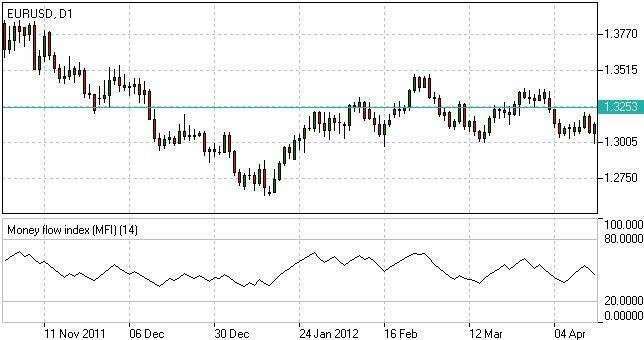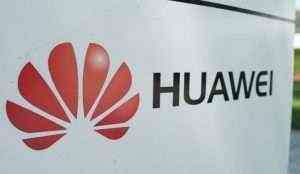
Propensity Company had a decrease of $1,800 in the current operating liability for accounts payable. The fact that the payable decreased indicates that Propensity paid enough payments during the period to keep up with new charges, and also to pay down on https://online-accounting.net/ amounts payable from previous periods. Therefore, the company had to have paid more in cash payments than the amounts shown as expense on the Income Statements, which means net cash flow from operating activities is lower than the related net income.
- Details relating to the treatment of each of these transactions are provided in the following sections.
- Cash flow statements are powerful financial reports, so long as they’re used in tandem with income statements and balance sheets.
- A cash flow statement is a valuable measure of strength, profitability, and the long-term future outlook of a company.
Poor cash flow is sometimes the result of a company’s decision to expand its business at a certain point in time, which would be a good thing for the future. Changes in cash from investing are usually considered cash-out items because cash is used to buy new equipment, buildings, or short-term assets such as marketable securities. But when a company divests an asset, the transaction is considered cash-in for calculating cash from investing. Learn how to analyze a statement of cash flows in CFI’s Financial Analysis Fundamentals course. Since no cash actually left our hands, we’re adding that $20,000 back to cash on hand. Now that we’ve got a sense of what a statement of cash flows does and, broadly, how it’s created, let’s check out an example.
Contents
Earlier we discussed how the cash from operating activities can use either the direct or indirect method. Most companies report using the indirect method, although some will use the direct method (see CVS’s 2022 annual report here). Remember the four rules for converting information from an income statement to a cash flow statement? This section covers revenue earned or assets spent on Financing Activities. When you pay off part of your loan or line of credit, money leaves your bank accounts. When you tap your line of credit, get a loan, or bring on a new investor, you receive cash in your accounts.
Regardless of the method, the cash flows from the operating section will give the same result. Using the cash flow statement example above, here’s a more detailed look at what each section does, and what it means for your business. The cash flow statement takes that monthly expense and reverses it—so online-accounting.net 13.12 you see how much cash you have on hand in reality, not how much you’ve spent in theory. However, you’ve already paid cash for the asset you’re depreciating; you record it on a monthly basis in order to see how much it costs you to have the asset each month over the course of its useful life.

Cash equivalents are highly liquid, short‐term investments that usually mature within three months of their purchase. Treasury bills, money market funds, and commercial paper are usually classified as cash equivalents. In this discussion when cash is used, it refers to cash and cash equivalents. Using the indirect method, actual cash inflows and outflows do not have to be known. The indirect method begins with net income or loss from the income statement, then modifies the figure using balance sheet account increases and decreases, to compute implicit cash inflows and outflows.
Accounting Principles II
The remainder of this section demonstrates preparation of the statement of cash flows of the company whose financial statements are shown in Figure 16.2, Figure 16.3, and Figure 16.4. In the third section, financing activities, the reader learns how the company chose to pay for its growth. Financing activities reports the activity in the long‐term liability and stockholders’ equity accounts.
- In the third section, financing activities, the reader learns how the company chose to pay for its growth.
- The net cash flows from operating activities adds this essential facet of information to the analysis, by illuminating whether the company’s operating cash sources were adequate to cover their operating cash uses.
- Companies use financial statements — income statements, balance sheets and cash flow statements — to track and assess their operational and financial performance.
- Cash and cash equivalents are consolidated into a single line item on a company’s balance sheet.
- The statement of cash flows (also referred to as the cash flow statement) is one of the three key financial statements.
- The direct method shows the major classes of gross cash receipts and gross cash payments.
Investing net cash flow includes cash received and cash paid relating to long-term assets. From this CFS, we can see that the net cash flow for the 2017 fiscal year was $1,522,000. The bulk of the positive cash flow stems from cash earned from operations, which is a good sign for investors. It means that core operations are generating business and that there is enough money to buy new inventory. These figures can also be calculated by using the beginning and ending balances of a variety of asset and liability accounts and examining the net decrease or increase in the accounts.
Cash Flow Statement: What It Is and Examples
As we have seen from our financial model example above, it shows all the historical data in a blue font, while the forecasted data appears in a black font. The table below serves as a general guideline as to where to find historical data to hardcode for the line items. His work has appeared in various publications and he has performed financial editing at a Wall Street firm. Upgrading to a paid membership gives you access to our extensive collection of plug-and-play Templates designed to power your performance—as well as CFI’s full course catalog and accredited Certification Programs.

Decreases in current liabilities indicate a decrease in cash relating to (1) accrued expenses, or (2) deferred revenues. In the first instance, cash would have been expended to accomplish a decrease in liabilities arising from accrued expenses, yet these cash payments would not be reflected in the net income on the income statement. In the second instance, a decrease in deferred revenue means that some revenue would have been reported on the income statement that was collected in a previous period.
Increase in Notes Payable
Meaning, even though our business earned $60,000 in October (as reported on our income statement), we only actually received $40,000 in cash from operating activities. So, even if you see income reported on your income statement, you may not have the cash from that income on hand. The cash flow statement makes adjustments to the information recorded on your income statement, so you see your net cash flow—the precise amount of cash you have on hand for that time period. The purpose of a cash flow statement is to give investors and creditors an idea of the company’s financial health. The statement shows whether or not a company has enough cash to meet its short-term and long-term obligations.
When a note’s maturity is more than one year in the future, it is classified with long-term liabilities. Notes payable are written agreements (promissory notes) in which one party agrees to pay the other party a certain amount of cash. The debt is typically in the form of a promissory note, which is a written agreement between two parties. In most cases, the note will specify when the debt is due and how it will be repaid. For Propensity Company, beginning with net income of $4,340, and reflecting adjustments of $9,500, delivers a net cash flow from operating activities of $13,840.
Cash from financing activities includes the sources of cash from investors and banks, as well as the way cash is paid to shareholders. This includes any dividends, payments for stock repurchases, and repayment of debt principal (loans) that are made by the company. Working capital represents the difference between a company’s current assets and current liabilities. Any changes in current assets (other than cash) and current liabilities (other than debt) affect the cash balance in operating activities. As a result, D&A are expenses that allocate the cost of an asset over its useful life. Depreciation involves tangible assets such as buildings, machinery, and equipment, whereas amortization involves intangible assets such as patents, copyrights, goodwill, and software.
Mullen Automotive CEO Responds to Fox Business Question – Marketscreener.com
Mullen Automotive CEO Responds to Fox Business Question.
Posted: Fri, 01 Sep 2023 13:30:08 GMT [source]
Both the items of Notes Payable and Notes Receivable can be found on the Balance Sheet of a business. Notes Receivable record the value of promissory notes that a business owns, and for that reason, they are recorded as an asset. NP is a liability which records the value of promissory notes that a business will have to pay. When a business takes out a loan in the form of a note payable, it records the amount borrowed as a liability on its balance sheet.
Direct Cash Flow Method
The company has borrowed money from the creditor, and has agreed to repay the debt by a certain date. The note payable affects the cash flow statement because it is an amount of money that the company owes. The cash flow statement shows how much cash the company has on hand, and how much cash the company is owed. When a company takes out a loan, it increases its liabilities, and when it repays a loan, it decreases its liabilities. In the case of Propensity Company, the decreases in cash resulted from notes payable principal repayments and cash dividend payments. The financial statement that reports activity in cash and cash equivalents for a period of time is called the statement of cash flows.
The interest rate and frequency of payments are parts of the note agreement. Regardless of the frequency of interest payments, a company must record the interest expense in the same period it accrues the interest by debiting interest expense and crediting interest payable. When it makes the interest payments, it debits interest payable and credits cash. These transactions affect the operating cash flow section of the statement of cash flows.
For instance, if you make a $250 interest payment on a note payable, you would report a $250 cash outflow in the operating activities section. When a business takes on a new loan or note, it increases the notes payable account on the balance sheet. A business reports this amount as a cash inflow in the financing activities section of the cash flow statement. Cash flows from financing activities always relate to either long-term debt or equity transactions and may involve increases or decreases in cash relating to these transactions. Stockholders’ equity transactions, like stock issuance, dividend payments, and treasury stock buybacks are very common financing activities.
It’s important to remember that long-term, negative cash flow isn’t always a bad thing. For example, early stage businesses need to track their burn rate as they try to become profitable. The interest on a note payable is reported on the income statement as Interest Expense. Usually this means the amount incurred (not the amount paid) under the accrual basis of accounting. The final task to wrap up the statement of cash flows is to tally net cash generated or used by summing all three sections.